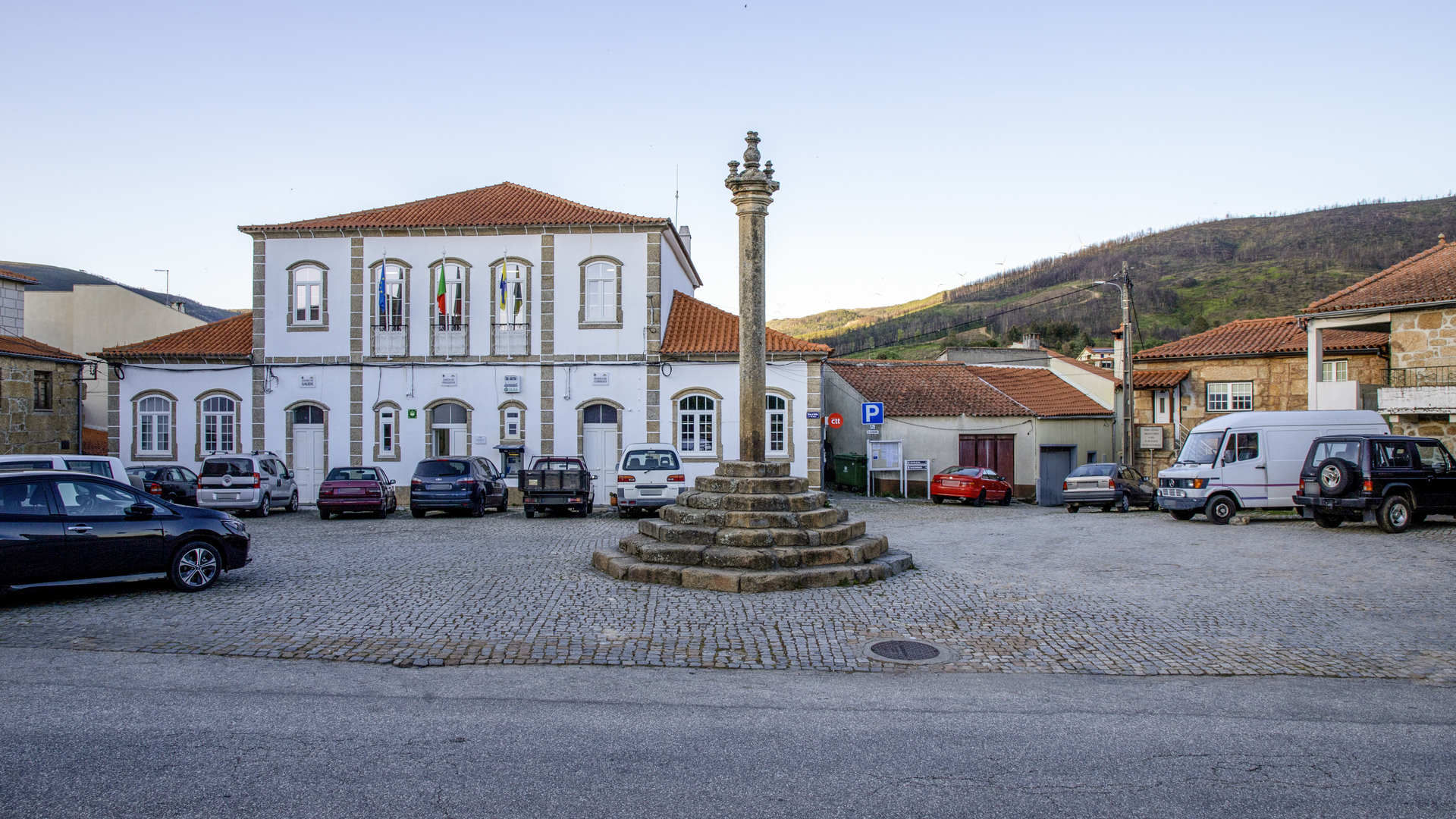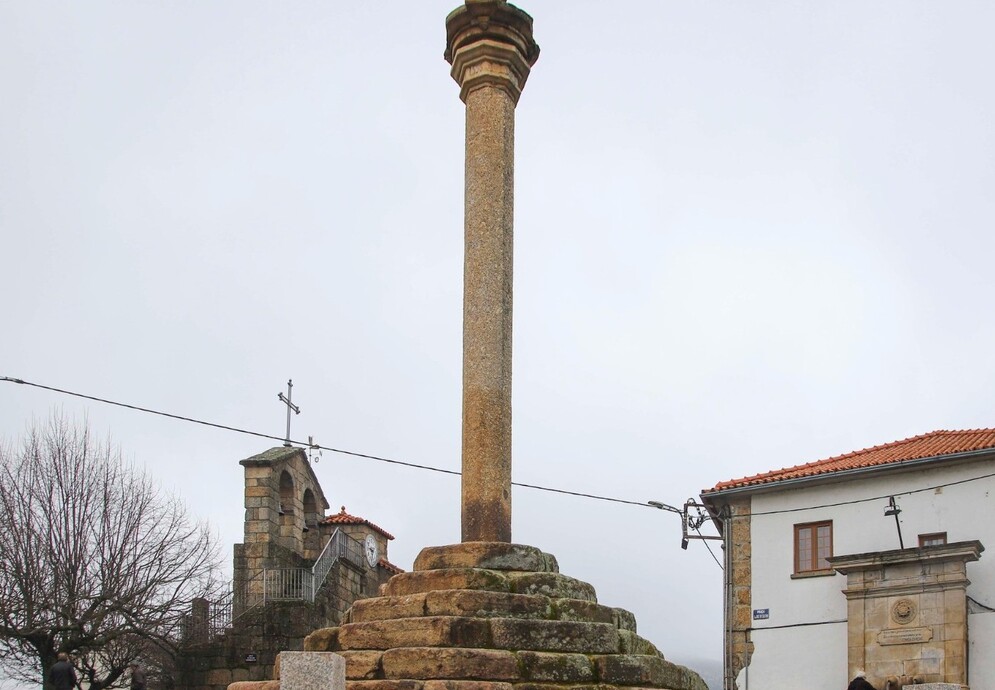The town of Valhelhas is located in the heart of the Serra da Estrela and has a vast and grandiose history. In 1188, King Sancho I ‘took care of the settlement’ and granted it a charter with extraordinary privileges (Rocha, 1962:93), making it the seat of the then powerful military Religious Order of Alcântara. In the 16th century, Valhelhas was already a small municipality, with a town hall and a pillory. The Valhelhas pillory, considered a Property of Public Interest, was built with fine-grained granite, probably in 1555, the date engraved on it, and must have been seven metres high.



About
Website
https://www.freguesiadevalhelhas.pt
Address
Praça Doutor José de Castro
, Valhelhas
6300-235
Valhelhas
GPS coordinates
40.4080202,-7.4019448
The pillory of Valhelhas is encased in "old stones and still attests to the privileges of Valhelhas' popular nobility. It stands imposingly in a wide square, Praça do Dr José de Castro, in front of the primary school building and the Parish Council, which occupies the site of the old town hall and jail. It is formed by a tall granite column, in which we can identify three essential elements: socle, shaft and capital. The socle, the part of the column that rests on the ground, has seven steps around it forming regular octagons, the dimensions of which gradually decrease until they reach the platform, which rests on them and has a radius of one metre. The shaft, the visible part of the column, has an octagonal prismatic shape with a radius of between 0.30 and 0.40 metres. At its upper end, which connects it to the capital, it has one well-defined edge that surrounds it‘ (Rocha, 1962: 184). It has ’eight smooth faces and at the top is a capital made up of a protruding, flat moulding with a concordant section of double trim and listels. The top is made up of a larger abacus with a flat, circular base at the bottom" (Sousa, 1998: 45). The capital of this pillory has ‘a much larger perimeter than the top of the shaft and is decorated with three small columns, the one in the centre being much taller’ (Rocha, 1962: 184). On this pillory, "the top is made up of a larger abacus with a flat, circular base at the bottom. Two small obelisks rest on it, rising from a square shape and developing into a turn with triple modelling and a terminal knob. In the centre there is a pinnacle that rises from the two elements described in a large volume, but with an identical shape, ending in an octagonal crown with a rosette" (Sousa, 1998: 45). According to Decree no. 23:122 of 11 October 1933 of the Ministry of Public Instruction / General Directorate of Higher Education and Fine Arts, ‘the pillories in Portugal are more symbols of regional autonomy than places of torture.’ In this sense, the decree highlights the importance of "classifying all existing pillories, as well as their inventory, using the power conferred by the 2nd part of Article 108(2) of the Constitution, the Government decrees and I promulgate, to be valid as law, the following: Article 1. All pillories that have not already been classified are hereby classified as buildings of public interest, under the terms of article 30 of decree no. 20:985, of 7 March 1932".According to Luís Chaves, in his book Pelourinhos de Portugal (s/d), ‘the pillories, originally picotas, mark out the history of the municipalities in Portugal’. In the same way, Pinheiro Chagas states in the Dicionário Popular (s/d) that ‘these monuments, although they have accumulated the functions of autonomy of the municipality with those of ignominy, since in them the penalties of flogging and exposure of criminals, etc. were carried out, deserve to be preserved and protected from the unconscious prejudice that has arisen against them in many parts of the country’. References:Chagas, M.P (s/d) Dicionário PopularChaves, L. (1930) Pelourinhos Portugueses, Estudos Nacionais do Instituto de Coimbra, Gaia: Edições ApolinoDecreto nº 23:122 de 11/10/1933 do Ministério da Instrução Pública / Direção Geral do Ensino Superior e das Belas ArtesMALAFAIA, E.B. de Ataíde, (1997) -Pelourinhos Portugueses - tentâme de inventário geral, Lisboa, Imprensa Nacional - Casa da Moeda.Rocha, A. (1962) Monografia de Valhelhas, Coimbra: Edição de AutorSousa, J.R (1998) Pelourinhos do Distrito da Guarda, Viseu: Edições de Autor, p.45
